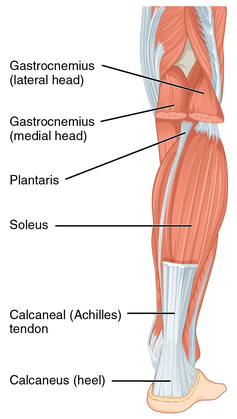Understanding Calf Strains and Achilles Tears
Simone Biles Calf Injury During the 2024 Paris Olympics
The 2024 Olympics have been a showcase of extraordinary athletic talent, with athletes pushing the limits of human performance. Among these remarkable competitors is Simone Biles, whose breathtaking routines have captivated audiences worldwide. Unfortunately, even the most elite athletes are not immune to injury. Just a few days ago, Simone Biles suffered a leg injury, later identified as a calf strain. This blog post delves into the signs and symptoms of calf strains and explores the prevalence of Achilles tears, two common concerns for athletes.
Signs and Symptoms of a Calf Strain

A calf strain occurs when the muscles in the back of the lower leg are overstretched or torn. This type of injury can range from mild to severe, depending on the extent of the muscle damage. Here are the key signs and symptoms to watch for:
- Sudden Pain: One of the hallmark signs of a calf strain is sudden, sharp pain in the back of the lower leg. This pain often occurs during physical activity and can be quite intense.
- Swelling and Bruising: Following the initial injury, swelling and bruising may develop in the calf area. This is due to the tearing of muscle fibers and the subsequent bleeding into the surrounding tissues.
- Muscle Tightness: A strained calf muscle may feel tight or stiff, making it difficult to walk or stand on tiptoe. The affected muscle may also feel tender to the touch.
- Weakness: Depending on the severity of the strain, the calf muscle may lose some of its strength, affecting the athlete’s ability to perform movements that require pushing off the ground.
- Difficulty Walking: Severe calf strains can make walking painful and challenging. Athletes may limp or be unable to bear weight on the affected leg.
Prevalence of Achilles Tears
While calf strains are a common injury among athletes, Achilles tendon tears are another serious concern, particularly for those involved in high-impact sports like gymnastics. The Achilles tendon, which connects the calf muscles to the heel bone, is the strongest and largest tendon in the body but is also susceptible to injury.
Key Facts About Achilles Tears:
- Prevalence: Achilles tendon tears are relatively common in athletes, especially those who participate in sports that involve sudden bursts of activity, jumping, and rapid changes in direction. Studies suggest that the incidence rate in the general population is around 18 per 100,000, but this rate is significantly higher among athletes.
- Risk Factors: Factors that increase the risk of an Achilles tear include age, previous tendon injuries, insufficient warm-up, and improper training techniques. Athletes over the age of 30 are at a higher risk, as the tendon loses elasticity with age.
- Symptoms: The classic symptoms of an Achilles tear include a sudden, sharp pain in the back of the ankle or calf, often accompanied by a popping or snapping sensation. This is usually followed by difficulty walking and an inability to push off the injured leg.
- Recovery: Achilles tears typically require a long recovery period, often involving surgery followed by months of rehabilitation. Early diagnosis and treatment are crucial for the best outcomes.
Simone Biles’ leg injury serves as a poignant reminder of the physical demands and risks faced by athletes at the highest levels of competition. Understanding the signs and symptoms of calf strains, along with the prevalence and impact of Achilles tears, highlights the importance of proper training, conditioning, and injury prevention strategies. As we continue to marvel at the feats of these incredible athletes, it’s essential to support their health and well-being, ensuring they can perform at their best while minimizing the risk of injury.
At Myo-Fit Mobility & Therapy, we are committed to helping athletes recover from injuries and regain their peak performance levels. Through comprehensive care and individualized treatment plans, we strive to keep our clients active and healthy, ready to take on the challenges of their sport.
About Myo-Fit Mobility & Therapy
Myo-Fit Mobility & Therapy is dedicated to providing high-quality physiotherapy to active individuals and athletes. Our manual therapy-based approach ensures that clients receive the best care in a healthy and safe environment, upholding the highest professional and ethical standards. Whether you’re recovering from an injury or seeking to improve your performance, we are here to help you achieve your goals.